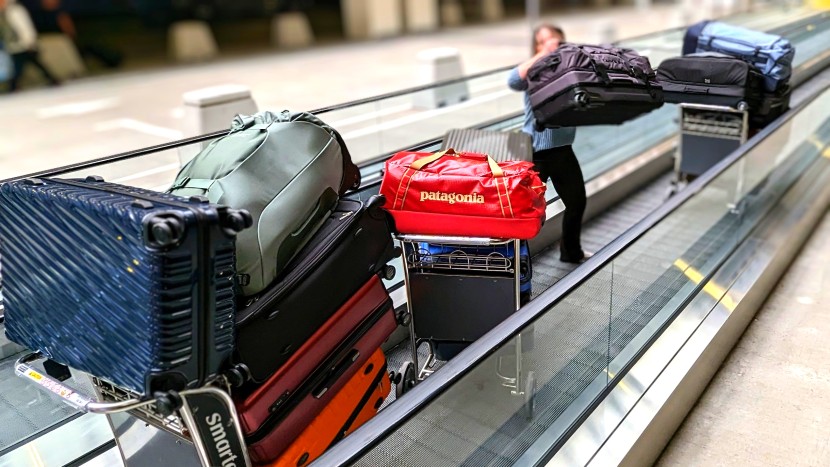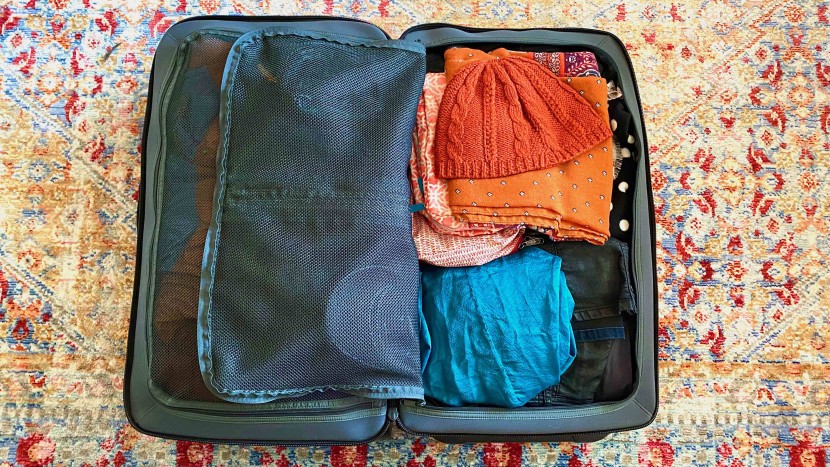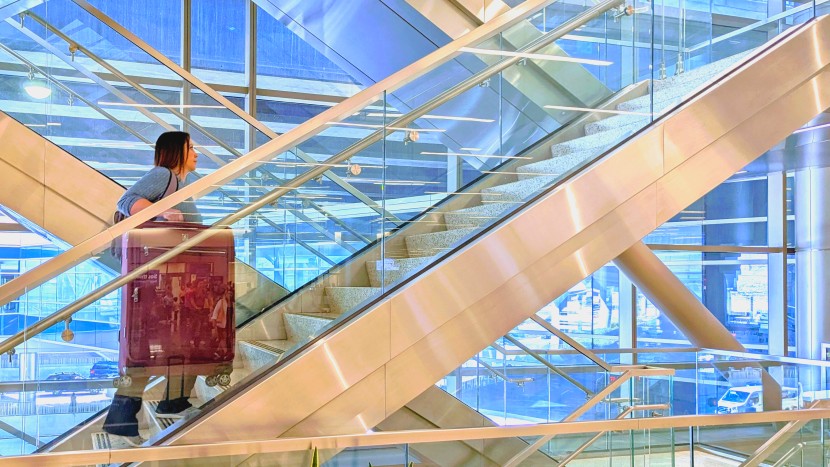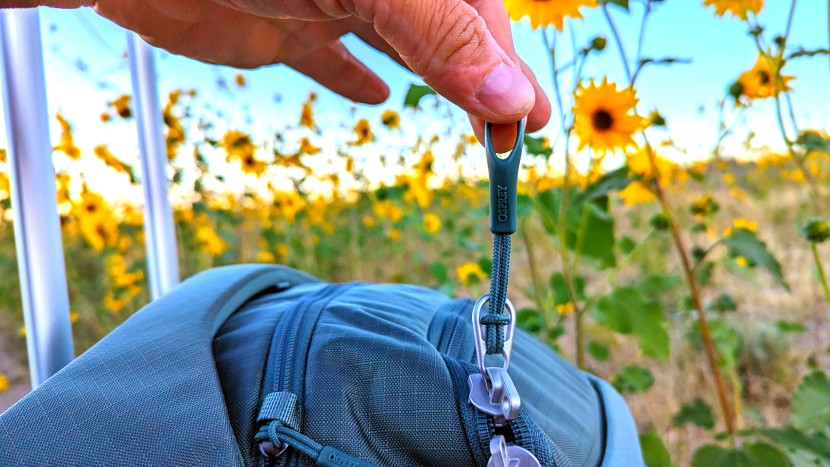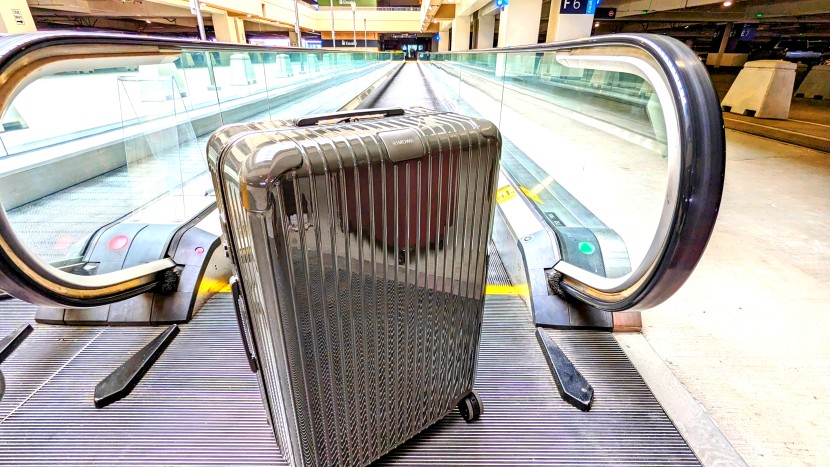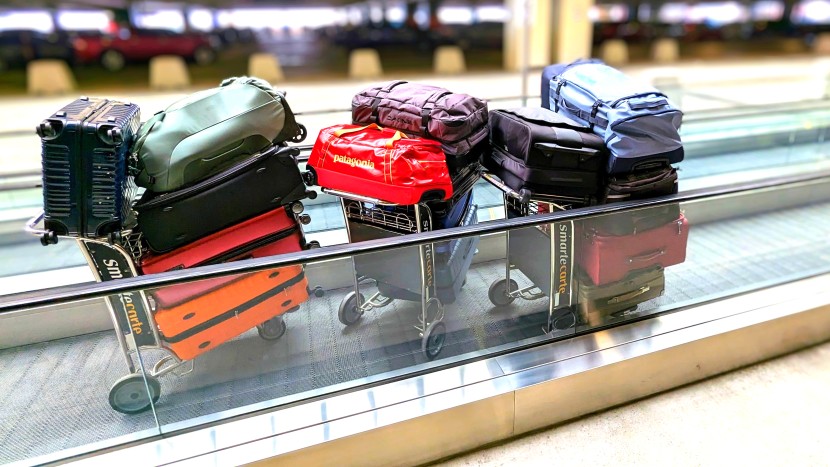We've been testing suitcases around the world for a long time. We put each piece of luggage through its paces across wide-ranging and in-depth tests. Here's what that entails.
Capacity
The most heavily weighted metric in our testing plan was centered on each bag's ability to effectively accommodate a variety of payloads. After all, the key purpose of any piece of luggage is to carry as much of your stuff as possible from point A to point B. Tests for this metric focused on specifics such as product weight, dimensions, and volume. Each suitcase was weighed empty, and this weight was subtracted from typical domestic and international checked luggage weight requirements to determine how much available weight each bag could accommodate before exceeding airline weight restrictions.
Additionally, each bag's interior dimensions (height, depth, and width) were measured and multiplied to determine each bag's actual interior volume.
Lastly, we looked at each suitcase's ability to effectively and securely contain a variety of different payloads. We studied each bag and noted any unique design features that aided the packing process. Features like compression panels — which tightly compress clothing to create more space and fewer wrinkles — were noted. After each bag was assessed for its special features, each was packed and unpacked several times to determine how well it could effectively store and secure a variety of items for different seasons and types of travel.
Ease of Transport
Another important aspect of any piece of luggage is its ability to move and be moved. The very nature of airline travel requires a suitcase that can be easily lifted, pulled, or rolled during a wide variety of activities. The most common of which is walking. Tests for this metric focused on the quality and function of grab handles, adjustable trolley handles, and wheels in order to determine which bags boasted the best overall ease of transportation.
The quality and performance of each bag's wheels were paramount in our testing process. We measured the height and width of each wheel, studied its components and construction materials, and then rolled (dragged) them across a half-mile of concrete, dirt roads, gravel, and grass to determine how well they rolled on a variety of terrain.
Then we found out if each set of wheels could “walk the line” by placing 10 feet of tape on level flooring and pushing each bag down the tape line to see how straight they traveled and how smoothly they rolled. Lastly, we rolled each bag through countless terminals and concourses to get a feel for how they rolled over long distances. Specifically, we checked for annoying sounds or vibrations and studied each bag for how smoothly it rolled and maneuvered.
After nitpicking each bag's wheels, we turned our attention to their grab handles and adjustable trolley handles. We documented the quality and number of grab handles, and then weighted down each bag and carried it up a flight of stairs. We loaded them into cars to determine how balanced each bag felt, and we counted the number of settings and heights for each trolley handle. We also noted how stable this handle was and how easy it was to use and adjust.
Lastly, we pulled our packed suitcases by the trolley handle over curbs and up flights of stairs to determine how well each could be leveraged over obstacles common to street crossings, boarding shuttles and public transit, and getting from your mode of transportation to your accommodation. Once we were done lugging and tugging our suitcases, we stood them up and checked how well they could balance while fully loaded.
Construction Quality
After weeks of lugging suitcases to and fro, we finally had a chance for a little payback. A true indicator of any piece of luggage's worth is whether or not it can repeatedly endure the rigors of being lifted, plopped, slammed, bumped, and sometimes dropped or thrown — so we did exactly that.
We studied each bag's protective features. We looked for bumpers, protective rails, reinforcements, and quality fabrics. We turned our attention again to handles, zippers, and wheels and noted any significant wear and tear to each during weeks of use. We consulted the multitude of user experiences and feedback through online user reviews, searching for possible weak points. And then, we got aggressive.
We lined up our suitcases on their backs and soaked them with hose water for several minutes. Then we stood them up and soaked them again for the same amount of time. Prior to being deluged, we placed strips of blue industrial paper towels inside the main compartments of each.
When the “rain” ceased, we opened each bag and examined the paper towel for any visible moisture that seeped through from zippers or directly through the external material.
As if being drowned wasn't enough, we decided to let each bag take flight — and not in a good way. We dropped each bag from three feet in the air onto concrete flooring, we pushed each down a flight of concrete stairs. We examined each for damage incurred.
Design and Functionality
Our final metric focused on each suitcase's aesthetics, uniqueness, and versatility. Additionally, we noted the creative features of each and how these features offered added value to each bag.
During our tests, we made note of each bag's zipper, latch, and buckle function. We counted the total number of exterior and interior compartments and asked ourselves whether each layout made sense. We then separated the bags into three groups: hardshells, softshells, and duffels. We then determined the most logical use for each suitcase. Some were obviously built for business, while others were more specifically designed for casual travel or adventure. Some were defined as multi-use bags because they offered a little bit of everything.
Versatility is an important part of any piece of luggage, so we packed and unpacked each suitcase with combinations of different payloads to determine which could handle the widest variety of packed items. And there's something to be said for the “X factor.” Some bags have it, and some don't. So we scoured each for even minute details or features that gave it added value. We noted every standout characteristic that offered distinction, swagger, or elevated function.
Conclusion
Our comprehensive, side-by-side testing was aimed at finding the best overall suitcase. Each product was individually assessed and then directly compared against competing bags in our lineup. After weeks of testing and use, we were able to determine the best overall luggage, as well as several other top picks that will best fit your style, pocketbook, personality, and travel style.

